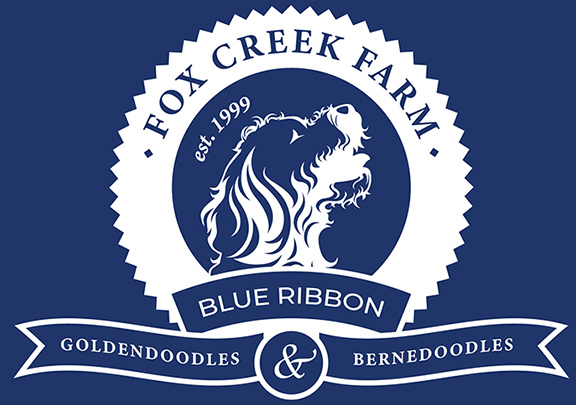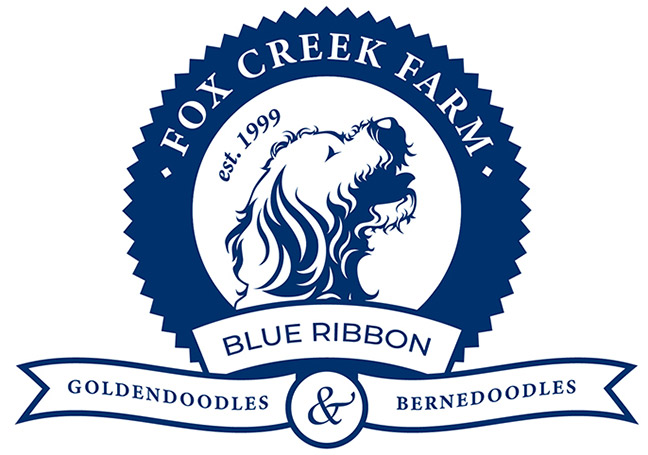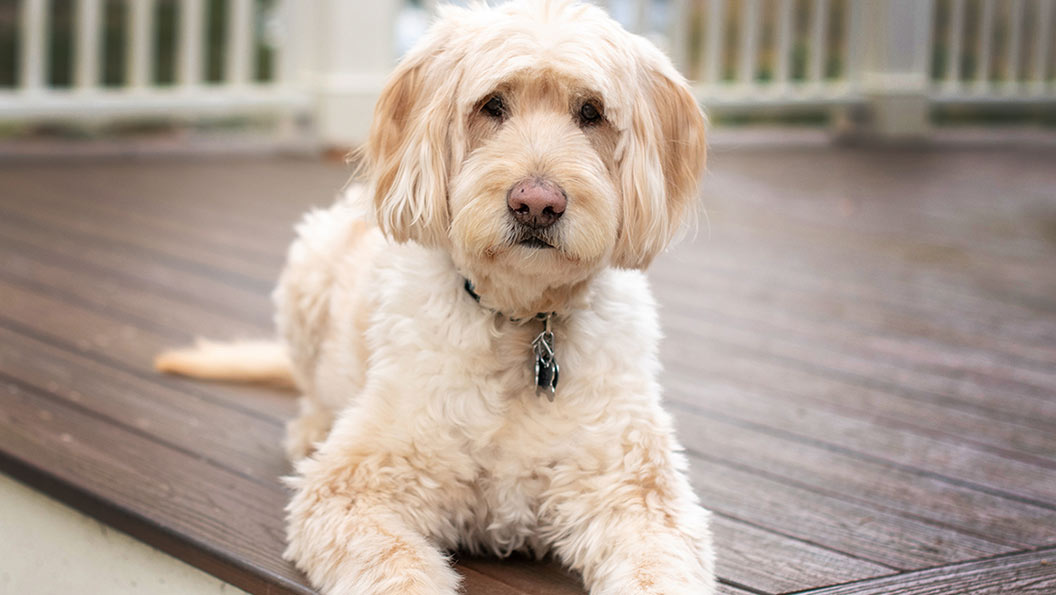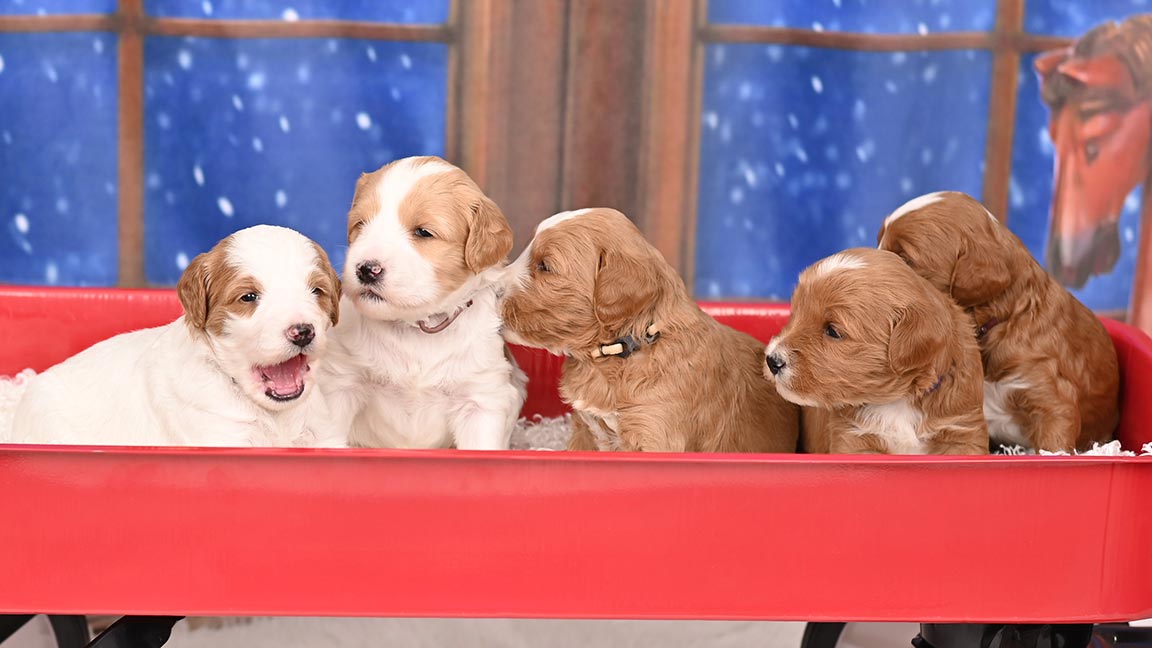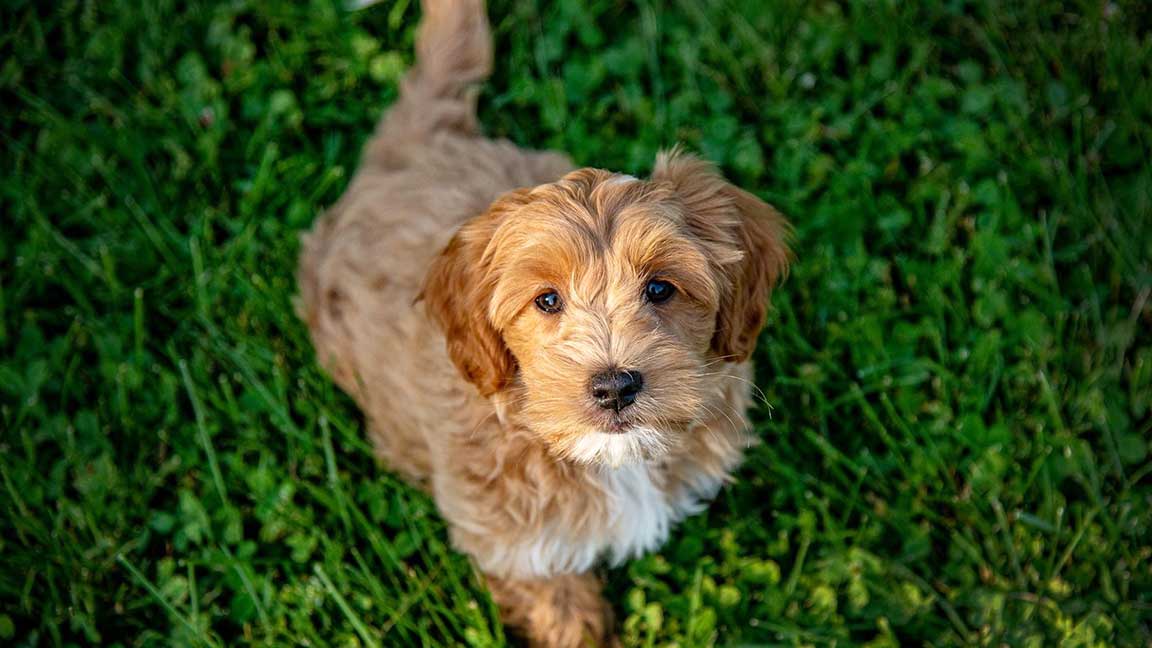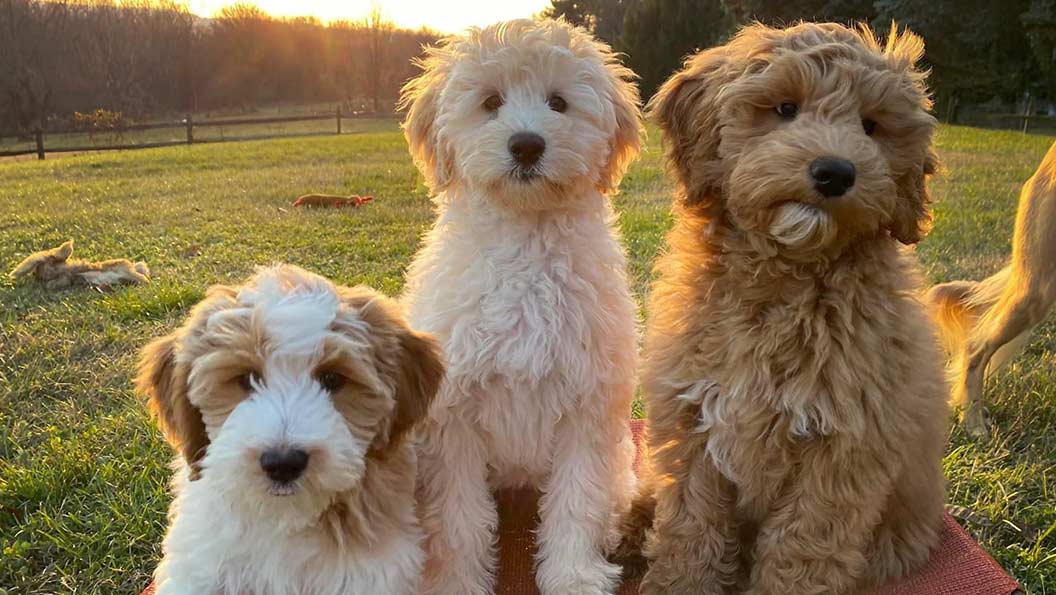
The Differences in F1, F1B, F2, and Multigen Goldendoodles?
Not all Goldendoodles are the same! While most have the cuddly, teddy bear, fluffy Doodle look, their genetics can vary greatly depending on their generation and what parents they have. So, what is a multigenerational goldendoodle?
There can be significant differences between what breeders refer to as F1, F1B, F2, and multigenerational (called multigens) Goldendoodles. Knowing the distinction between the 4 types of Goldendoodles within this breed can help choose the breeder and desired traits you hope to find in your new Goldendoodle. Mixed breed dogs with “doodle” in their name represent the combination of a pure breed with some percentage of poodle genes.
What is GANA?
It is important to note that the Goldendoodle Association of North America, Inc. (aka GANA), an organization responsible for supporting ethical breeding and guiding the development of this fairly new breed, is the leading authority on all things Goldendoodle. This organization sets the standards and affirms that these generations are acceptable and contribute to the diversity of the Goldendoodle gene pool. The grading scheme (definitions of each generation) per the Goldendoodle Association of North America can be found here.
What does the “F” mean in Goldendoodle breeding?
Before diving into their differences, what does F mean? The “F” stands for filial to denote the generation after the parental generation. The number following the F signifies the generation of the Goldendoodle.
For example, a first-generation Goldendoodle is bred from two non-Goldendoodle parents (a Golden Retriever and a Poodle) while a second-generation Goldendoodle is bred from two F1 Goldendoodle parents. Crossing two F2 Goldendoodles constitutes a “Multigen”. Knowing these distinctions helps identify what traits can be expected in Goldendoodle litters.
We’ve talked about the numbers and how they indicate generation so now we will explain the letter signification. “B” stands for backcross which designates a Goldendoodle as one who has an F1 Goldendoodle parent and one of the original breeds as a parent (Golden Retriever or Poodle). An original parent breed can be crossed back to a Goldendoodle of any generation and is a practice done to continually attempt to keep the gene pool of offspring close to 50% of each parent breed.
What are Goldendoodle Furnishings?
A key element to discuss is the role that furnishing genes play in the looks and shedding factor of the different generations of Goldendoodles. The Golden Retriever carries zero furnishing genes and the Poodle carries two furnishing genes. Furnishing genes are responsible for the presence of hair that continues to grow in length most noticeable on the face and muzzle.
Golden Retrievers have short, smooth hair on their face due to their lack of furnishing genes. Poodles, unless shaven, will have long hair covering the face and muzzle as a result of carrying two furnishing genes. Because furnishing genes are dominant, it takes just one copy of this gene to present in long hair on the face. This is why F1 Goldendoodles all tend to have the “Doodle” look instead of the smooth face and non-growing coat of the Golden Retriever. However, two furnishing genes are necessary to facilitate a non-shedding coat.
The curl genes involved in each generation will dictate the type of coat each puppy inherits. Golden Retrievers carry zero curl genes whereas Poodles carry two curl genes. All F1s will inherit a total of one copy of the curl gene allowing their coats to be wavy in general. In puppies of deeper generations who inherit two curl genes, they will exhibit a coat similar to a Poodle’s coat. For those puppies who inherit no curl genes, their coats will be straight to slightly wavy. More information and photos showing the different coat types can be found here.
Perhaps a decade ago, testing for the number of furnishings and curl genes became accessible to breeders. Until that point, the only way to know if a breeder was producing high-shedding or flat-coated Goldendoodles was via trial and error. Due to a lack of testing abilities, it was thought that a curly coat would render better non-shedding results simply because it appeared to inherit the Poodle’s non-shedding curly coat. We now know that the curl and furnishing genes are unrelated and that the curl genes have no impact on the shedding factor.
F1 Goldendoodle
The F1 generation of Goldendoodle is the first Goldendoodle to be bred from a Poodle and Golden Retriever. They are known for their friendliness, being the perfect family pet, and being great for first-time dog owners. They tend to shed considerably less than a Golden Retriever making them more appealing to those allergic to high-shedding dogs or that just didn’t want to deal with hair being left on furniture, clothing, etc. They were bred with this very purpose in mind. Of course, their precious appearance helps too! The coats are typically wavy due to inheriting one curl gene from the Poodle and no curl genes from the Golden Retriever.
F1 Goldendoodles benefit from hybrid vigor making them healthier than their purebred parents. F1 Goldendoodles have proven to have better longevity than their pure breed ancestors. This hybrid vigor comes from crossing two unrelated dog breeds. F1 Goldendoodles cannot be guaranteed to be non-shedding. Because F1 Goldendoodles are the result of a highly shedding (Golden Retriever/zero furnishing genes) and a non-shedding (Poodle/two furnishing genes) parent, this generation typically shows a reduction in the amount of shedding as compared to a Golden Retriever.
F1 Goldendoodles can also come in smaller sizes. The precious F1 mini Goldendoodle comes from crossing a Golden Retriever and a toy or mini Poodle. This allows smaller genes to affect the outcome of the size of the offspring.
Overall, the F1 Goldendoodle’s appearance and characteristics are fairly predictable since its composition is 50% Golden Retriever and 50% Poodle genes.
Here are the typical traits of an F1 Goldendoodle:
- 50% purebred Poodle and 50% purebred Golden Retriever
- Coat type is mostly wavy
- Non-shedding and hypo-allergenic is not guaranteed, typically mild shedders
- Highest qualities of hybrid vigor
F1B Goldendoodle
The F1B Goldendoodle is produced by crossing an F1 Goldendoodle and a Poodle or an F1 Goldendoodle and a Golden Retriever. In the F1B generation that is an F1 Goldendoodle crossed back with a Poodle, there is a 50% chance each puppy produced will inherit two furnishing genes and also a 50% chance each puppy will inherit two curl genes.
There is no way of knowing ahead of time how these two inherited traits will match up in any individual puppy. In the other F1B option of crossing an F1 Goldendoodle with a Golden Retriever, no puppies will inherit two curl genes and no puppies will inherit two furnishing genes. This pairing will likely produce higher shedding coats that will be straight or wavy.
Additionally, the F1B Goldendoodle can also benefit from hybrid vigor. Under the healthiest and most cognizant of circumstances, these Goldendoodles can be healthier than their purebred parents. These benefits will only be fortuitous should your breeder be careful about choosing their breeding pairs utilizing health screening protocols. The hybrid vigor will not diminish if the breeder is thorough in health testing and ensures that the parent breed lines are uncrossed, meaning that the parents are unrelated.
Like the other generations of Goldendoodles, the F1B generation is highly intelligent, easily trainable, and beautiful. They will be very loyal to their families and are a perfect fit for any home with children, especially those with allergies as long as the breeder tests the individual puppies’ DNA to see which ones inherited two furnishing genes.
The traits to be expected in F1B Goldendoodles include:
- A higher incidence of puppies having stronger resemblances to the “B” parent
- Coat type can be straight, wavy, or curly depending on the number of curl genes inherited
- Non-shedding and hypo-allergenic qualities completely reliant on using a Poodle as the “B” parent, and then only approximately half of the puppies will inherit two furnishing genes
- Possesses hybrid vigor
F2 Goldendoodle
The F2 Goldendoodle is a second-generation Goldendoodle. They are created by crossing two F1 Goldendoodles. This generation requires careful selection of parents based on the traits desired in the offspring. Each puppy has equal chances of inheriting zero, one, or two furnishing genes as well as zero, one, or two curl genes. These genes can be inherited in any combination in a single puppy. Puppies inheriting two furnishing genes will likely be non-shedding.
Puppies inheriting one furnishing gene will have reduced shedding most likely equal to an F1 Goldendoodle. Those inheriting no furnishing genes will have coats very similar to a Golden Retriever including a smooth face and moderate to heavy shedding. All three coat types are possible in the F2 generation as well – straight, wavy, or curly. Here are the expectations possible in an F2 Goldendoodle:
- The most variation in individual puppies to have a strong appearance of one or the other parent breeds (Golden Retriever or Poodle)
- Coat types are straight, wavy, or curly, but now have the possibility of smooth faces and coats that do not grow or need clipping like Golden Retrievers
- Non-shedding hypo-allergenic coats, mildly shedding coats, and high shedding coats depending on the number of furnishing genes inherited
- Hybrid vigor still exists when the breeder ensures each parent is healthy and not familiarly crossed
The multigenerational Goldendoodle is created by experienced breeders who are working towards a specific “type”. Type means traits that all puppies in the same litter inherit eliminating the variety of possibilities within a single litter. Just as in the F2 generation, without careful selection of breeding pairs, a variation of furnishings and coat types can be created. In the multigen, breeders can begin to be more consistent as they can select breeding prospects using DNA to ensure two furnishing genes are present in both parents. This ensures all puppies will inherit two furnishing genes giving them a higher chance of being non-shedding and allergy friendly.
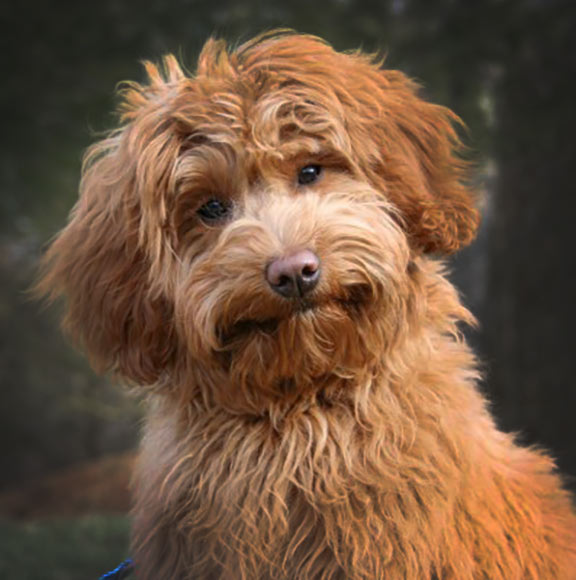
The traits to expect in properly bred Multigen Goldendoodles:
- The crossing of 2 Goldendoodles whereas only one can be an F1
- All deeper generations (F1B, F2, F2B, F3 and so on) when crossed create another multigen litter
- Coat type and appearance can vary based on the DNA of parents, but with DNA tools, reliability in type can be successful
- Ability to create entire litters with non-shedding coats and all the same coat type
- Hybrid vigor can still exist when the breeder ensures each parent is healthy and not familiarly crossed
Possible Traits Per Goldendoodle Generation:
- Wavy Coats – All generations
- Curly Coats – F1B (where the “B” is a Poodle parent), F2, and Multigen
- Straight Coats – F1B (where the “B” is a Golden Retriever parent), F2, and Multigen
- Flat Coat (like a Golden Retriever) – F1B, F2, and Multigen
- Non-shedding Coats – 50% of F1B’s (where the “B” is a Poodle parent), 25% of F2’s, and up to 100% of Multigens
- Shedding Coats – All generations where both parents do not carry two furnishing genes
Hybrid Vigor Benefits – Highest in F1 but as long as there is no inbreeding in the original purebred parents and diligence in crossing unrelated Goldendoodles is practiced, hybrid vigor can still be present in deeper generations.
In summary, the “F” in the generation stands for filial or classification of what is produced beyond the parental generation. The number following refers to how many generations of that breed have been produced from that specific line. The “B” indicates one of the original parent breeds was crossed back into that family line. These differences are important to understand to know what characteristics are possible in specific pairings.
As you can see, not all Goldendoodles are the same! Each generation has its characteristics that are different based on their parents. Knowing the differences can help you choose which Goldendoodle is right for you and your family. It is important to know the breeder you have selected is knowledgeable about the genetics of each parent dog to be able to predict the traits that will be produced by crossing specific dogs together.
You may not understand the genetic reports on each parent dog, but the breeder should be able to confidently explain them to you. Breeders that have not done DNA profiles on their breeding dogs before breeding them cannot begin to provide you with accurate predictions of the traits your future puppy may possess. These traits do not only include information on furnishings and coat types, but also diseases each parent may carry as well as the colors they are capable of producing.
Reputable and Ethical Goldendoodle Breeders
Working with a breeder who is accredited by the Goldendoodle Association of North America, Inc. will ensure you are not dealing with a puppy mill. This certification includes the assurance that your Goldendoodle was produced ethically and is from healthy parents.
Goldendoodles are well known for their amazing personalities and for being the perfect family dog. Even though their generations may be different, their loyalty and lovable personalities are nearly the same whether they’re an F1, F1B, F2, or Multigen. They are typically great with kids, extremely smart, and above all, endearing. No matter what their color or coat type may be, they are very hard to not love!
that I could take her/him on a plane and that he/she have the temperment to be a therapy dog. My last dog was a 120 pound Bernese Mountain Dog who worked as a therapy dog. That experience was very rewarding and i wanted to continue that way of giving back to the.community.
Camille is adjusting to her new home wonderfully. She didn't eat anything the first 24 hours, just drank a little water. But after that it's obvious she loves her PawTree kibble. The first 36 hours she was very calm. She liked her little crinkly lamb and her red bone. But today she's gotten playful and bouncy. She has a ball as big as her head that she likes to chase and chew on. She's only had 1 accident in the house which happened because we weren't paying attention to her. She loves everybody but it's clear I, Mommy, am her favorite. She follows me wherever i go. I got a soft carrier that I can take on a plane. I had errands to do today so she went with me, including the grocery store. She just slept in her carrier in the grocery cart. No one even knew she was there. She readily gets in her crate. We have to close the latch because she instantly found out how to open it.
She has the perfect personality for being a therapy dog. She'll let anyone hold her. I took her to her vet who declared her "perfect."
It's clear that during her first 8 weeks with Fox Creek Farm she was loved and well taken care of. I chose Fox Creek because of the number of years they have been breeding goldendoodles and have been choosing dogs to breed that will forward a healthy line. They answered all of my questions and never got annoyed with the number of times I contacted them. Their website was very extensive with lots of advice on raising the dog. The breeder of my last dog had no interest in him after I picked him up, not even with health problems he developed. I know that the folks at Fox Creek want to know the good and the bad of their dogs and will incorporate information to breeding subsequent litters.
To tell the truth, I had concerns that
Fox Creek promoted a particular brand of dog food. The Paw Tree company is a multi level marketing business and Fox Creek makes money when their clients buy their products. But that fact didn't cancel my confidence in their commitment to each dog and to further the health of the breed. I will have my vet evaluate the quality of Paw Tree ingredients. I'm sure that Fox Creek has reason to trust Paw Tree, but they are not the only company making good products for dogs. Ultimately, I will follow the advice of my vet.
The bottom line is I feel really good about having chosen Fox Creek as the breeder of my dog. They are not just a business making money from breeding dogs. There are companies who charge less for their puppies. But my confidence in the breeder of my baby is worth the price I paid. I am fortunate to be able to afford the price and I can't put a price on knowing that whatever happens in the health of my dog, Fox Creek has done all that's possible to create the
best there is of the breed.
She is the smartest, most pleasant dog we have ever owned. She wants to please and she learns so fast! She has filled the hearts of these empty nesters. 🐾💖
Carl V,
Carmel, IN
